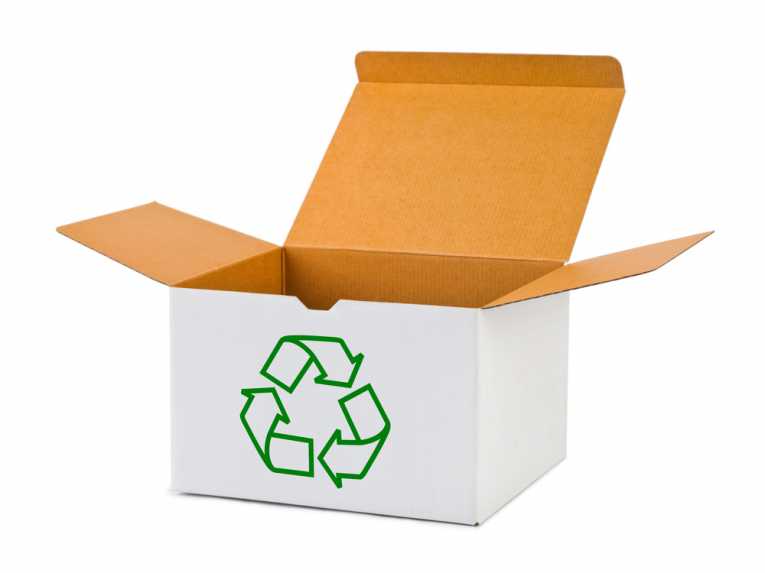A consumer's first interaction with a product is its packaging. The way a box looks communicates certain things about the brand - food marketed towards children comes in brightly colored packages featuring cartoon characters or animals, while food marketed towards adults comes in packages highlighting the product's health benefits. Packaging can highlight the brand name for products like cosmetics, jewelry or clothing where people are often paying for the specific brand as much as they are for the product. Ultimately it's a marketing tool - it catches the consumer's eye first and then, hopefully, keeps them from turning their attention to any other products.
Increasingly, packaging can tell consumers about the environmental values of the products they're buying. Sometimes it's as subtle as a garage door to the face - products may literally have the word 'green', 'nature', or 'environment' in their brand - but it can also be a small seal or certification highlighting a certain environmentally friendly aspect of the product. Unfortunately, those ideals often don't transfer to the packaging itself; most items come in single use boxes or bags which are used once and then thrown away.
Concern about the nation's growing landfills has started to change that. There are new, biodegradable chip bags and it's not uncommon to see products advertising that they're coming in smaller boxes. It's not just limited to food. Clothing and cosmetics are getting involved, too. Estee Lauder's vice president, Henry Renella, recently spoke about the presence of sustainability in the packaging for luxury brands. He pointed out that they can afford to be sustainable, and that they can do so without sacrificing the look that catches consumer attention.

Image Credit: mass distraction on Flickr
The Sustainable Packaging Alliance helps companies evaluate their packaging. They developed the Packaging Impact Quick Evaluation Tool, a web-based service used to "optimise packaging system design".
L'Oreal is another company who has recently made a dedication to sustainable packaging. They're using PIQET in addition to their own goals to ensure that they meet their goals; their focus is largely on recyclable sources rather than biodegradable sources, which they claim will not protect their products in transit. They're using recycled glass in products for several of their brands. Meanwhile, Nestle Brazil recently released milk cartons with caps made of plant-based polyethylene as part of Tetra Pak's goal to produce 100% renewable packaging.
Making sustainable products is important, but it's becoming clear that sustainable packaging can be just as important. Instead of using an excessive amount of material that is difficult to recycle and produce, companies are turning their attention to smaller packages and reused materials. It can give consumers peace of mind when they're shopping, which could make them more likely to buy - and it's undeniably better for the environment.
href="../../../environment/eco-friendly/index.html">Eco-Friendly










